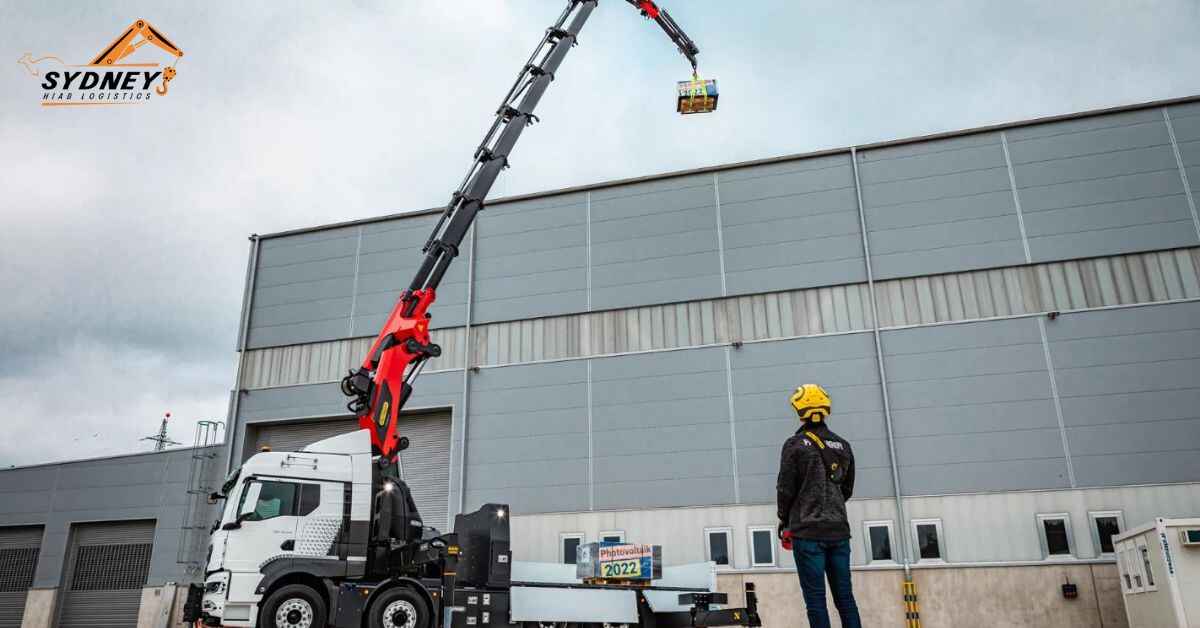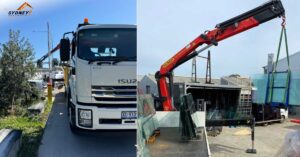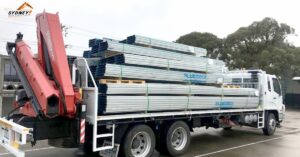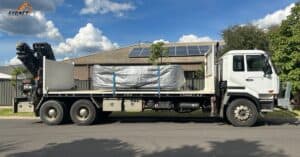Small Hiab cranes, also known as truck-mounted cranes or loader cranes, are versatile lifting solutions used in various industries for transporting and handling materials. These cranes are mounted on trucks, providing mobility and ease of use for lifting operations. In this detailed blog, we’ll explore the key aspects of small Hiab cranes, including their features, applications, benefits, and considerations for use.
What is a Hiab Crane?
Hiab cranes are hydraulic cranes mounted on trucks, designed to lift and transport heavy loads. The term “Hiab” is derived from the Swedish company Hydrauliska Industri AB, which pioneered the development of these cranes. Small Hiab cranes are typically used for lighter loads and are known for their flexibility and efficiency in various tasks.
Key Features of Small Hiab Cranes:
1. Hydraulic System:
Hiab cranes operate using a hydraulic system that provides powerful and precise lifting capabilities. The hydraulic system allows for smooth and controlled movements, essential for delicate and accurate lifting tasks.
2. Compact Design:
Small Hiab cranes are designed to be compact and lightweight, making them ideal for use in confined spaces and urban environments. Their compact design also makes them easy to maneuver and transport.
3. Mounted on Trucks:
These cranes are mounted on trucks, which enhances their mobility. This allows for quick setup and repositioning, making them highly versatile for various applications.
4. Extendable Boom:
The boom of a small Hiab crane is extendable, providing a greater reach for lifting material operations. This feature is particularly useful for accessing hard-to-reach areas and lifting over obstacles.
5. Remote Control:
Many small Hiab cranes come with remote control options, allowing operators to control the crane from a safe distance. This enhances safety and precision during lifting operations.
6. Load Capacity:
Small Hiab cranes have varying load capacities, typically ranging from a few hundred kilograms to several tons. The specific load capacity depends on the model and configuration of the crane.
Applications of Small Hiab Cranes:
1. Construction:
Small Hiab cranes are widely used in the construction industry for lifting and transporting materials such as bricks, steel beams, and scaffolding. Their mobility and compact design make them ideal for construction sites with limited space.
2. Logistics and Transportation:
In the logistics and transportation sector, Hiab cranes are used for loading and unloading cargo from trucks. They are especially useful for handling heavy or bulky items that cannot be easily moved by hand.
3. Landscaping:
Landscaping companies use small Hiab cranes to transport and place large trees, rocks, and other landscaping materials. The precise control of the crane allows for careful placement of these items.
4. Utility and Maintenance:
Utility companies use Hiab cranes for maintenance and repair tasks, such as lifting equipment and materials to elevated work areas. They are also used for installing and maintaining utility poles and streetlights.
5. Marine and Boat Handling:
Small Hiab cranes are employed in marine environments for lifting and transporting boats, as well as loading and unloading cargo from ships. Their corrosion-resistant materials make them suitable for use near water.
Benefits of Using Small Hiab Cranes:
1. Versatility:
Small Hiab cranes are versatile and can be used for a wide range of lifting and transport tasks across various industries. Their flexibility makes them a valuable asset for businesses with diverse needs.
2. Mobility:
Being mounted on trucks, Hiab cranes can be easily moved from one location to another. This mobility allows for quick response to different job sites and reduces downtime.
3. Efficiency:
The hydraulic system and extendable boom of Hiab cranes provide efficient lifting and precise control. This efficiency reduces the time and labor required for lifting tasks, increasing overall productivity.
4. Safety:
Hiab cranes enhance safety by allowing operators to lift and transport heavy loads without manual handling. The remote control feature further improves safety by enabling operators to work from a safe distance.
5. Cost-Effective:
Investing in a small Hiab crane can be cost-effective for businesses that frequently require lifting and transport services. Owning a Hiab crane eliminates the need to hire external lifting services, saving money in the long run.
Considerations for Using Small Hiab Cranes:
1. Training and Certification:
Operators of Hiab cranes must undergo proper training and certification to ensure safe and effective use. Training programs cover the operation of the crane, safety procedures, and maintenance requirements.
2. Maintenance:
Regular maintenance is crucial to keep Hiab cranes in optimal working condition. This includes checking hydraulic systems, inspecting the boom and lifting components, and ensuring all safety features are functional.
3. Load Limits:
It is important to adhere to the specified load limits of the Hiab crane to prevent accidents and damage. Overloading the crane can lead to equipment failure and pose serious safety risks.
4. Site Assessment:
Before using a Hiab crane, conduct a thorough site assessment to identify potential hazards and ensure there is enough space for the crane to operate safely. This includes checking for overhead obstructions and unstable ground conditions.
5. Compliance with Regulations:
Ensure that the use of Hiab cranes complies with local regulations and safety standards. This includes obtaining necessary permits and following industry guidelines for crane operation.
Conclusion
Small Hiab cranes are invaluable tools for lifting and transporting materials in various industries. Their versatility, mobility, and efficiency make them ideal for a wide range of applications, from construction and logistics to landscaping and marine operations. By understanding the features, benefits, and considerations of using small Hiab cranes, businesses can make informed decisions and maximize the value of these powerful lifting solutions. Regular training, maintenance, and adherence to safety guidelines are essential to ensure the safe and effective use of Hiab cranes, ultimately enhancing productivity and reducing operational risks.
Don’t settle for anything less than the best. Choose Sydney Hiab Logistics for top-quality service and dependable results. Contact us now and let’s get your project moving!




